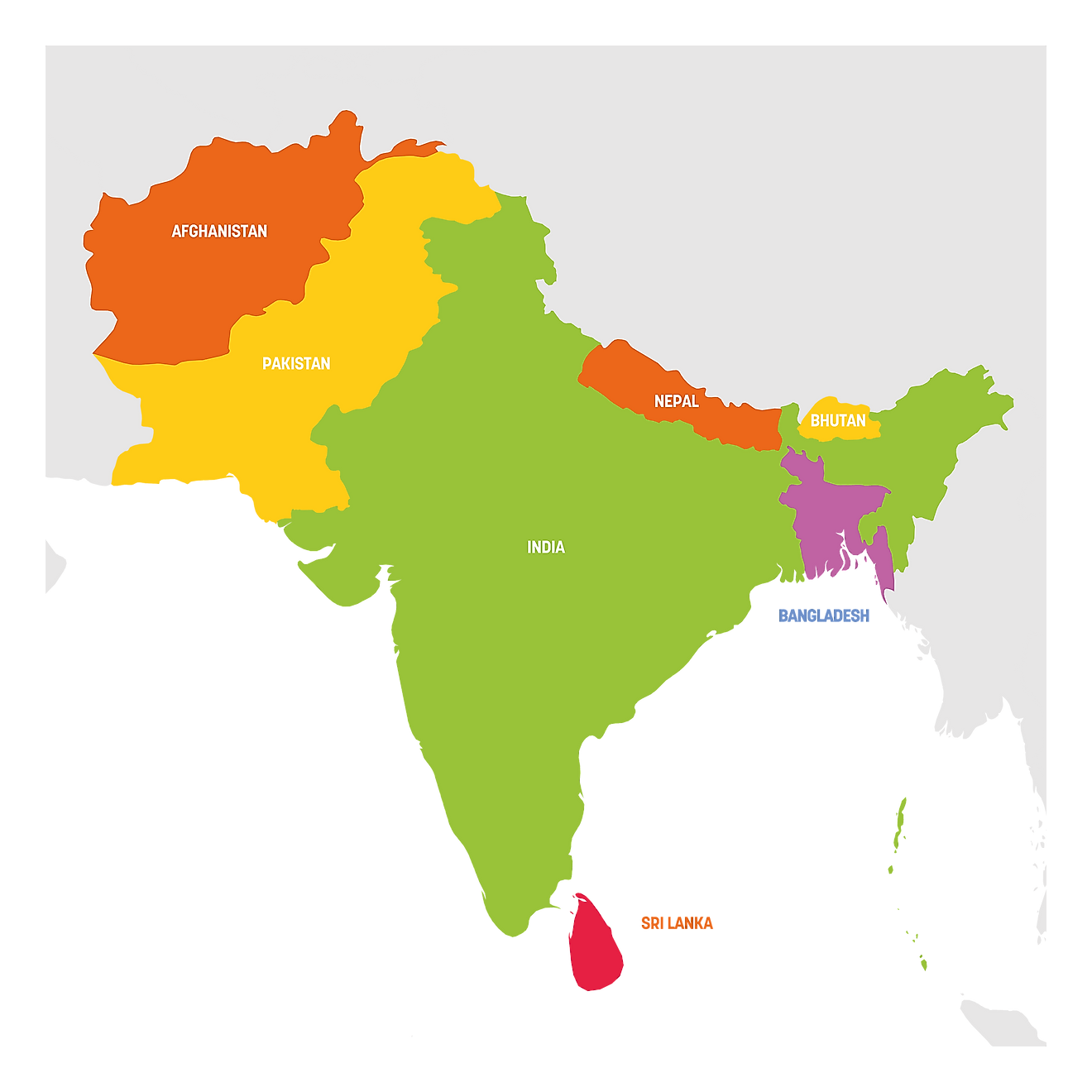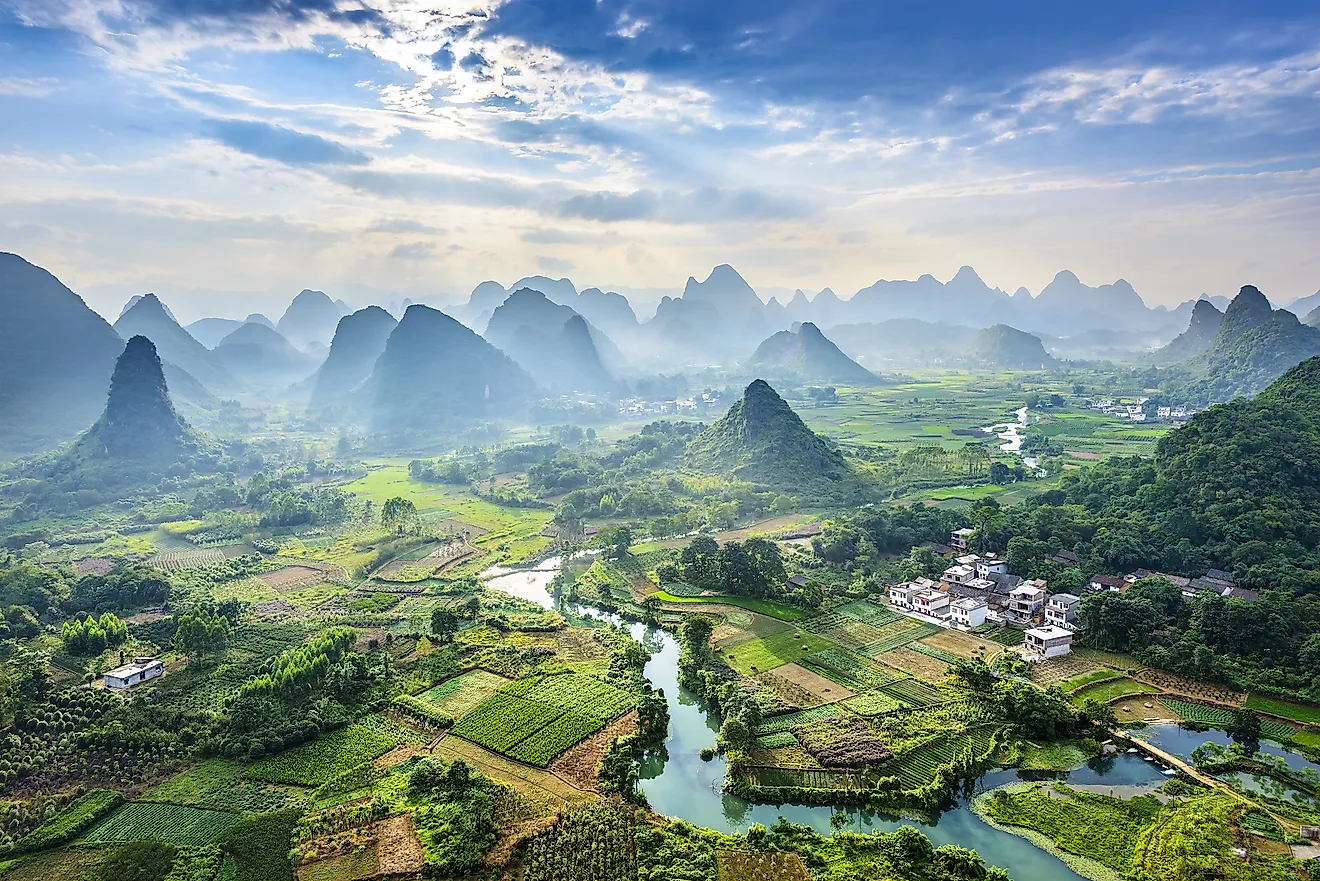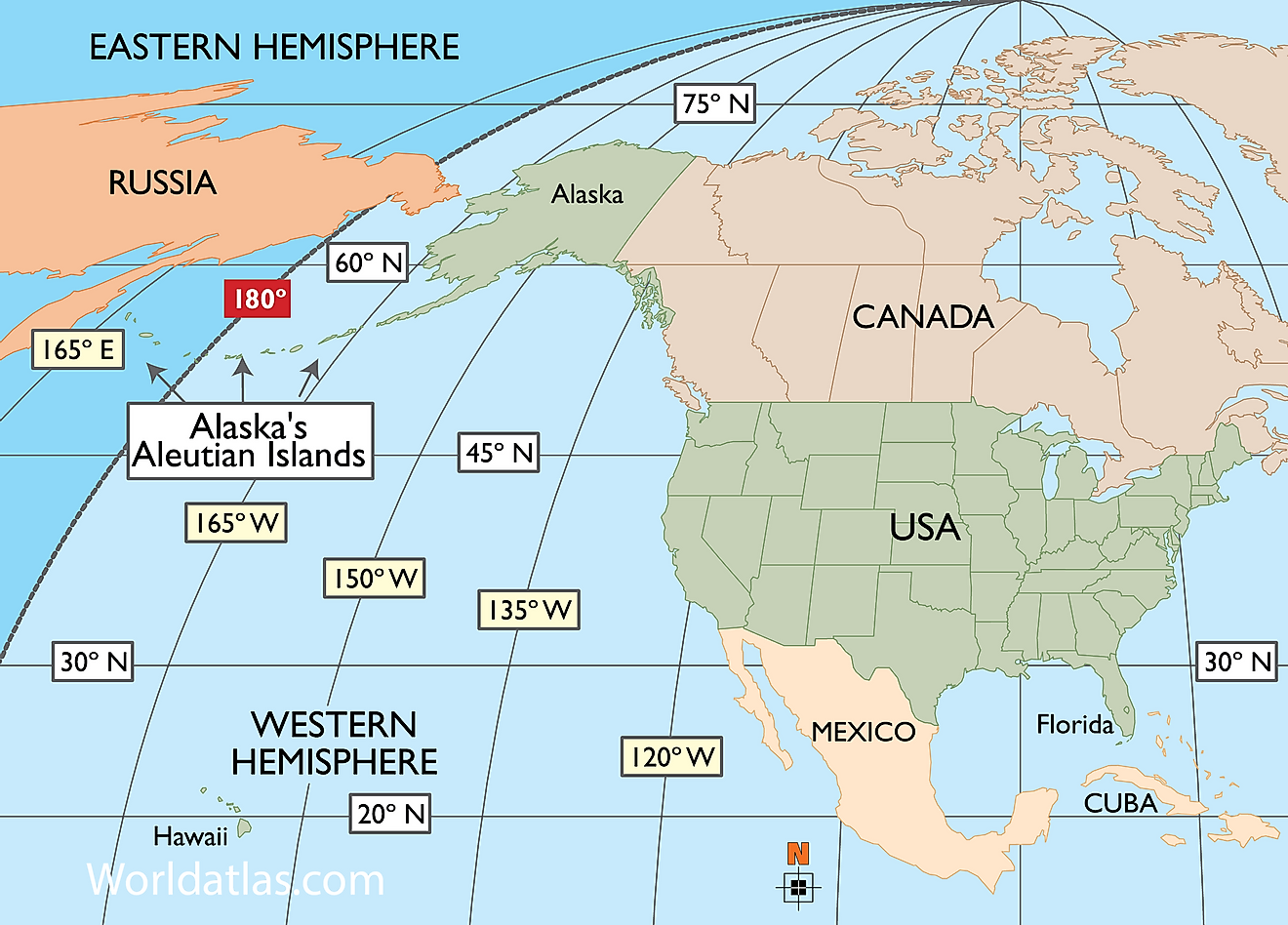Western Asia

- Western Asia has a population of approximately 283 million people.
- There are 18 countries in Western Asia.
- The Arabs and Turks are the two largest ethnic groups in Western Asia.
- Turkey is the most populous country in Western Asia, while Cyprus is the least populous.
Western Asia is a subregion of Asia situated west of Central Asia and South Asia, south of Eastern Europe, east of Southern Europe, and north of Africa. The bodies of water that border Western Asia are the Mediterranean Sea, the Black Sea, the Red Sea, the Persian Gulf, the Gulf of Oman, the Gulf of Aqaba, the Gulf of Aden, the Caspian Sea, and the Aegean Sea. About 283 million people live in Western Asia.
Geography Of Western Asia
Arabian Peninsula
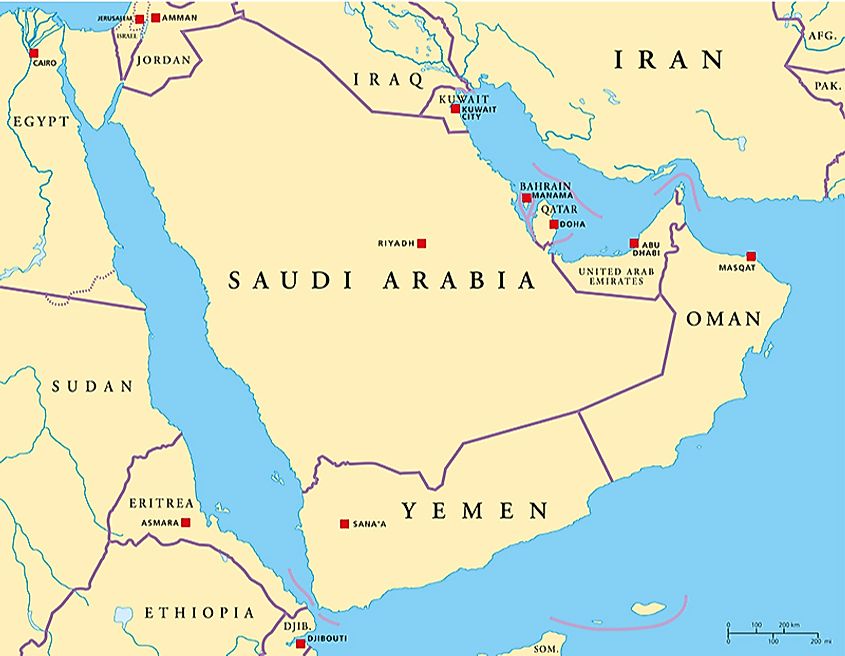
Western Asia can be divided into four regions. The southernmost region is the Arabian Peninsula. Most of the Arabian Peninsula is made up of desert terrain. The largest desert on the peninsula is the Arabian Desert, which is found in the northwest of Saudi Arabia. This desert has a total area of 68,000 km2, and is composed mainly of vast sand seas and sand dunes. The largest mountain range on the Arabian Peninsula is called the Sarawat, which stretches from the Saudi-Jordanian border in the north to the Gulf of Aden in the south.
The center of the Arabian Peninsula is dominated by a plateau called the Najd. Lava fields dominate large parts of the western part of Saudi Arabia. Located east of the cities of Jeddah and Mecca and south of Medina is a plains region known as Baraya ar Rakbah. The Arabian Peninsula is bordered to the west by the Red Sea and Gulf of Aqaba, to the east by the Persian Gulf and Gulf of Oman, to the south by the Gulf of Aden and the Arabian Sea, and to the north by the countries of the Fertile Crescent.
Fertile Crescent
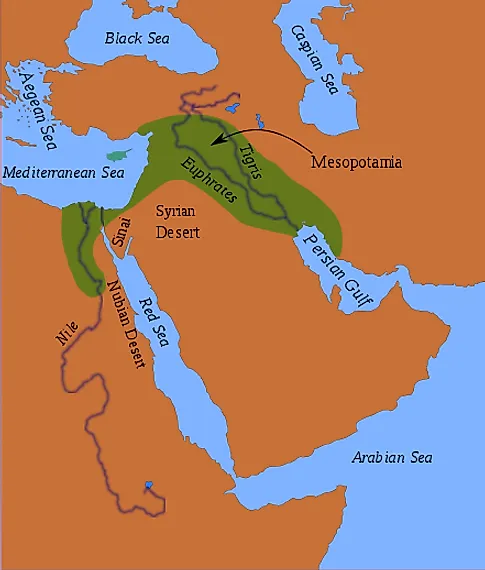
As its name implies, the Fertile Crescent is a historic crescent-shaped region of fertile land that encompasses the present-day countries of Iran, Iraq, Turkey, Syria, Lebanon, Israel, Palestine, Cyprus, and Jordan. This region gave birth to some of the world’s earliest civilizations, such as Mesopotamia, located in modern-day Iraq. Today, however, the Fertile Crescent is not very fertile at all, due to irrigation and dam projects that took place in the latter half of the 20th century which diverted water away from the marshlands of the Tigris-Euphrates river systems.
Caucasus
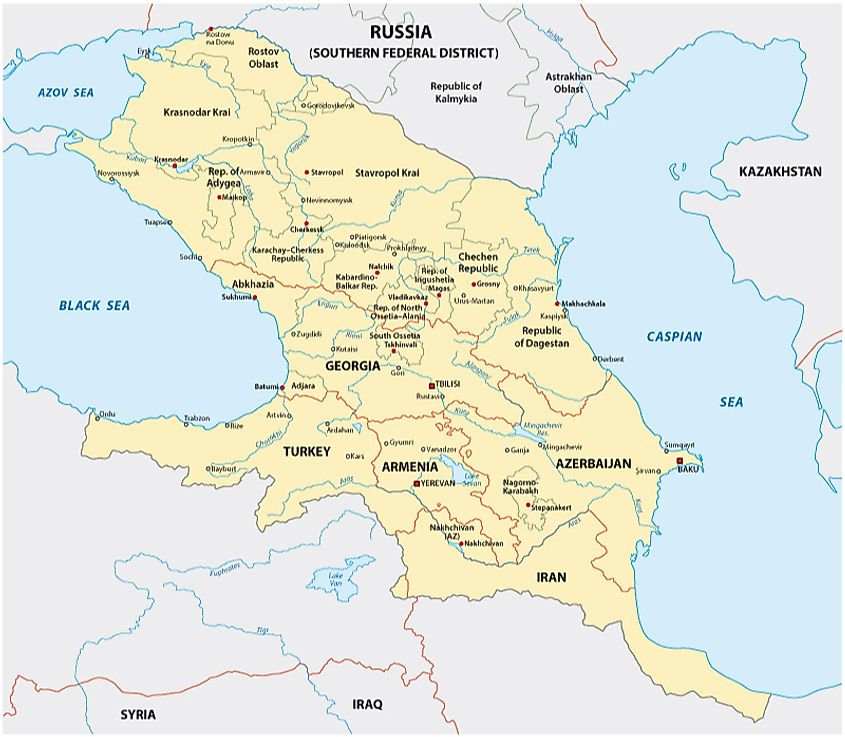
The most northerly region of Western Asia is the Caucasus, where present-day Georgia, Armenia, and Azerbaijan are located. It is also the smallest region in Western Asia. The Caucasus countries are bordered by the Black Sea to the west, the Caspian Sea to the east, Iran to the south, and Russia to the north. The line that divides Europe and Asia runs right through the center of the Caucasus Mountains, which are the dominant geographical feature of the Caucasus region. The terrain of the Caucasus is composed of several features, including grassy highlands, snow-capped crags, coniferous and deciduous forests, shrubby plateaus, and swamp forests.
Anatolia
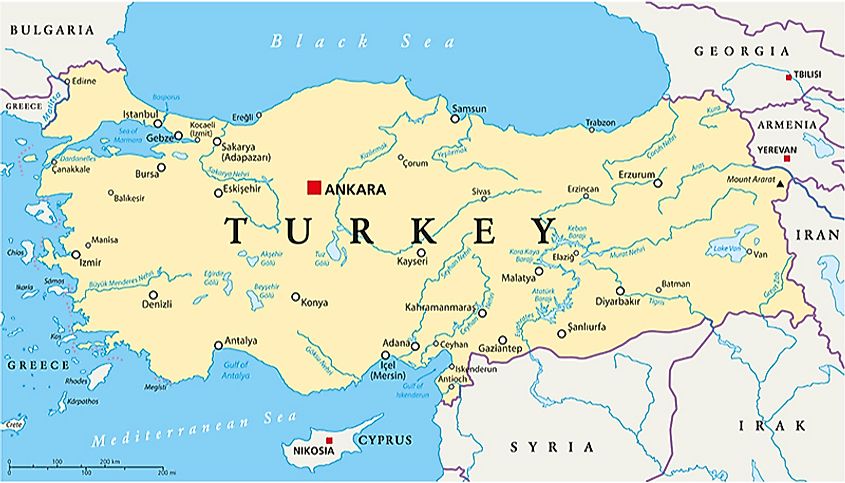
To the southwest of the Caucasus is Anatolia, otherwise known as Asia Minor. In addition to the Caucasus, Anatolia also borders Iran to the east, the Aegean Sea to the west, the Black Sea to the north, and the Fertile Crescent and Mediterranean Sea to the south. Geographically, Anatolia can be divided into four regions. The first is the Black Sea region, which is dominated by mountain ranges. Rivers flow from these mountains into the Black Sea. The second region, the Mediterranean region, consists of fertile coastal plains. The Anatolian plateau, which occupies Central Anatolia, is the third region, and is comprised of semi-arid highlands. The fourth region of Anatolia, Eastern Anatolia, is rugged territory with higher elevations. Mount Ararat, the tallest mountain in Turkey, is located in Eastern Anatolia, as are various rivers, including the northern ends of the Tigris and Euphrates rivers.
Peoples Of Western Asia
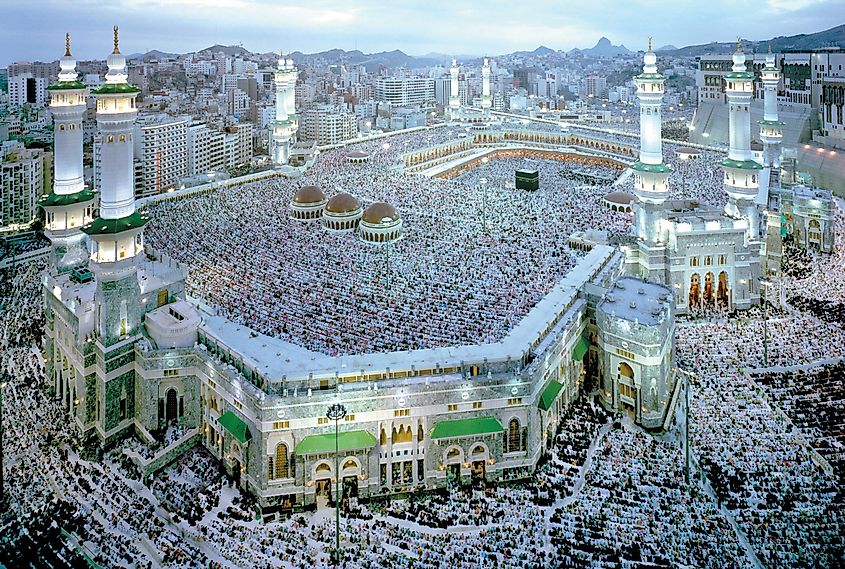
Western Asia contains many peoples, cultures, and languages. The Arab peoples dominate both the Arabian Peninsula and the Fertile Crescent. They were originally confined to the Arabian Peninsula, but ended up migrating northwards into the Fertile Crescent as they followed the 7th-century Muslim conquest of the region. The Arabian Peninsula is the birthplace of the Islamic faith. Islam’s holiest and second holiest cities, Mecca and Medina respectively, are situated on the peninsula. Islam is also the religion of the overwhelming majority of the people in the Arabian Peninsula, and in all of Western Asia as well.

In the Fertile Crescent, Israel and Cyprus are the only two countries without Arab, Muslim majorities. Instead, Israel’s population is mostly Jewish, while the population of Cyprus is mostly of Greek or Turkish descent. There are also significant ethnic and religious minorities in parts of the Fertile Crescent. The Kurds, for example, are the largest ethnic minority in Western Asia. They occupy a large part of the region, including southeastern Turkey, and northern parts of Syria and Iraq. The Christian population of the Fertile Crescent has shrunk significantly in the last half-century, but significant Christian communities still exist in Israel, Syria, and Lebanon, along with smaller Christian communities in Iraq and Palestine.
Anatolia, as part of Turkey, is home to the vast majority of Turks, who are Western Asia’s largest ethnic group. In comparison, the population of the Caucasus is small but quite diverse. Among the peoples of the Caucasus are the Armenians, Azerbaijanis, and Georgians, who live mostly in the countries named for them. The Caucasus also boasts other smaller groups, such as the Abkhazians and South Ossetians in Georgia, and the Lezgins in Azerbaijan.
The Countries Of Western Asia
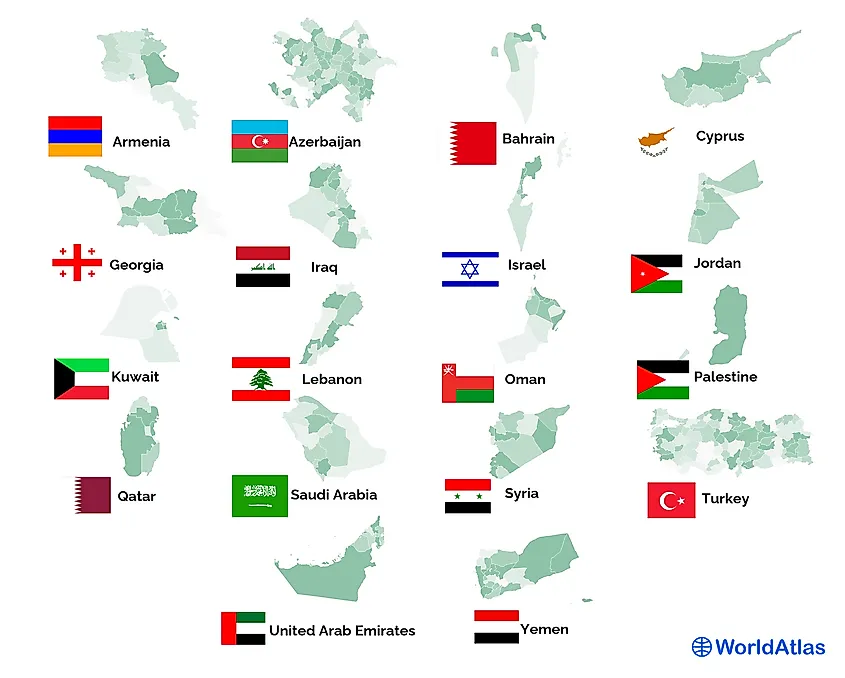
There are 18 countries in Western Asia. The countries of Yemen, Oman, the United Arab Emirates, Bahrain, Qatar, Kuwait, and Saudi Arabia are located on the Arabia Peninsula. The Fertile Crescent includes the countries of Iraq, Syria, Cyprus, Jordan, Lebanon, Israel, and Palestine. The Caucasus consists of three countries, Georgia, Armenia, and Azerbaijan, while Anatolia makes up the vast majority of Turkey’s territory.
The countries of the Arabian Peninsula hold much of the world’s oil reserves. This oil wealth has made most of the countries in the area quite wealthy, and helped build vast metropolises with tall, gleaming towers and skyscrapers. In terms of population, Saudi Arabia is the Arabian Peninsula’s most populous country, boasting a population of approximately 35 million. It also has Western Asia’s largest economy. Bahrain is the smallest and least populous country in the Arabian Peninsula region, with just 1.7 million people.
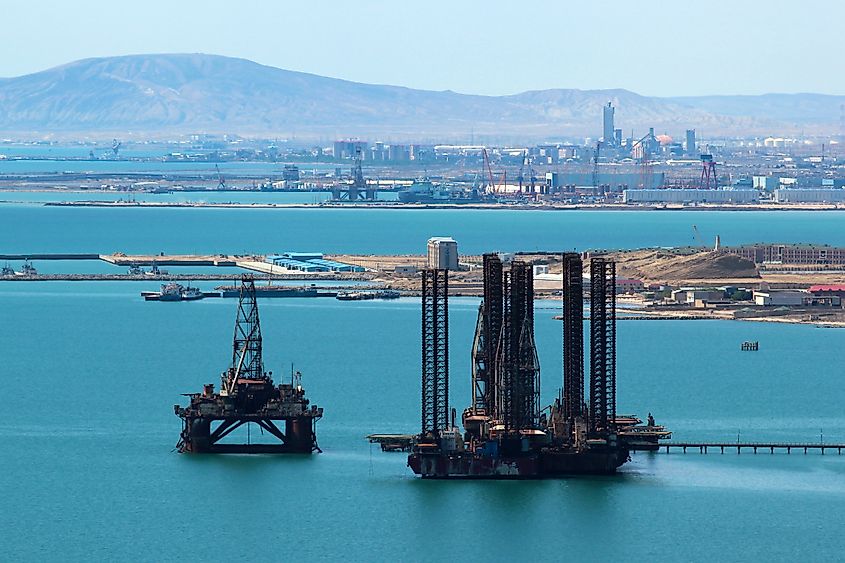
In the Fertile Crescent are two other oil-rich countries, Iraq and Syria. The other countries of the Fertile Crescent, including Lebanon, Jordan, Israel, and Palestine do not have vast oil reserves, and thus have had to develop their economies without such resources. Israel’s economy in particular is widely known for being based on high-tech products and services, so much so that it has been nicknamed Start-up Nation. Iraq is the most populous of the Fertile Crescent countries, while Cyprus is the smallest and least populous. More than 40 million people live in Iraq, while Cyprus has just 1.2 million, which also makes the island country the least populous in all of Western Asia.
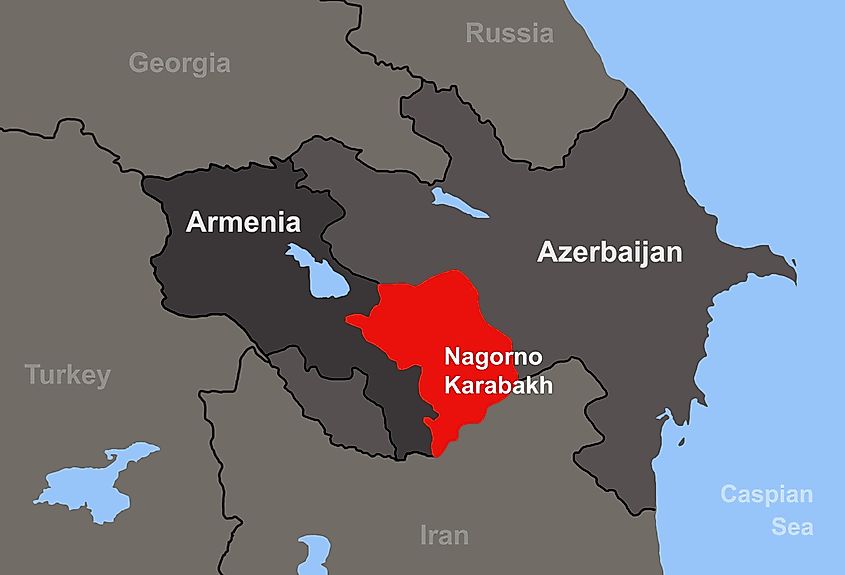
Anatolia makes up most of Turkey, the most populous country in all of Western Asia. More than 85 million people call Turkey home. Turkey is also home to Western Asia’s second biggest economy after Saudi Arabia. The Caucasus countries of Georgia, Armenia, and Azerbaijan were all former republics in the Soviet Union. They have struggled as independent countries, having to deal with both internal and external conflicts. Armenia and Azerbaijan have repeatedly fought over the enclave of Nagorno-Karabakh, which lies inside Azerbaijan but is populated mostly by Armenians. In addition, Georgia has fought with Russia over the breakaway Georgian regions of Abkhazia and South Ossetia. Azerbaijan is the most populous country in the Caucasus, with more than 10 million people, while Armenia has the smallest population in the Caucasus region, at around 3 million.
Western Asia
| Country | Population (2021) | Land area (km2) |
|---|---|---|
| Armenia | 2,957,730 | 29,743 |
| Azerbaijan | 10,023,320 | 86,600 |
| Bahrain | 1,641,170 | 760 |
| Cyprus | 1,198,580 | 9,251 |
| Georgia | 3,720,380 | 69,700 |
| Iraq | 39,309,780 | 438,317 |
| Israel | 9,053,300 | 21,937 |
| Jordan | 10,101,690 | 89,342 |
| Kuwait | 4,207,080 | 17,818 |
| Lebanon | 6,855,710 | 10,400 |
| Oman | 4,974,990 | 309,500 |
| Palestine | 4,685,310 | 6,020 |
| Qatar | 2,832,070 | 11,586 |
| Saudi Arabia | 34,268,530 | 2,149,690 |
| Syria | 17,070,130 | 187,437 |
| Turkey | 83,429,620 | 783,562 |
| United Arab Emirates | 9,770,530 | 83,600 |
| Yemen | 29,161,920 | 527,968 |









